My Houzz: Midcentury Cool With a Killer View in Salt Lake City
It says a lot about your style when you can rent pieces to production companies to use in films. That’s the case for self-taught designer Ron Green, who owns a midcentury modern furniture store called The Green Ant. Like a big-budget movie, the authentic vintage furniture collection inside his Salt Lake City home reads like an all-star cast — original Saarinen, Noguchi, Eames and other pieces make frequent appearances.
And Green’s preference for the golden age of design doesn’t end at the Womb chair he plops down in at the end of the day or the Noguchi coffee table he sets his drink on. The rest of his 1965 flat-roof house is influenced by the period too, right down to the vintage light fixtures and exterior paint job, which was influenced by the 1959 case study Bailey House by Pierre Koenig.
Houzz at a Glance
Who lives here: Ron Green and his bulldog, Hana
Location: Capital Hill neighborhood of Salt Lake City
Size: 2,800 square feet; 2 bedrooms, 1 bathroom
That's interesting: The house was rented out for use in the Danny Boyle film 127 Hours, starring James Franco. "They took out all my furniture, replaced it with cheap stuff and painted the entire living room turquoise," Green says. "I had to live that way for three weeks."
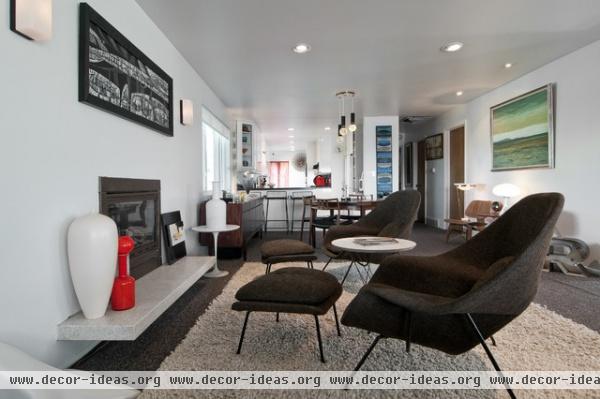
The house was in good condition when Green moved in, but he made some changes to better fit his style. For example, he tore out the newer Victorian-style mantel and '80s-recalling tile hearth and replaced it with a sleeker design.
Green also removed all the existing Home Depot light fixtures and replaced them with vintage ones.
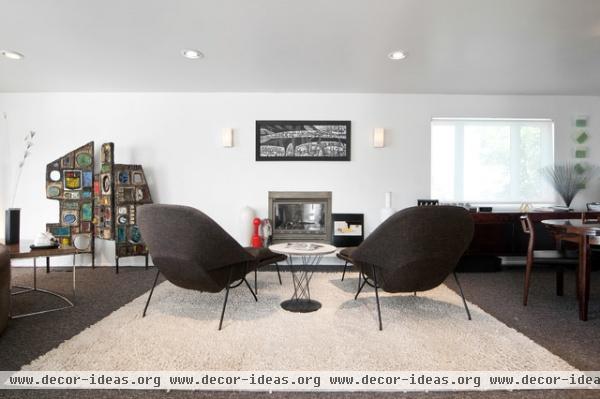
"Obviously I have a passion for midcentury modern design, and that's where my style stems from," says Green. "I prefer white walls with neutral-colored furniture and then bring color into the room via art that I have collected over the years."
Green bought the pair of brown vintage Womb chairs by Eero Saarinen from a relative of his dentist and had them reupholstered. "[My upholsterer] could refoam them, but there was a catch," he says. "Originally, these were tacked together and not stapled, as staplers didn't exist yet for upholstery. I asked my upholsterer if he would tack them back together instead of stapling them. He looked at me and just smiled — he told me he probably wouldn't do it again."
The three-panel floor sculpture was a lucky find through a local online ad. "I got it from the grandson of the original owner, who purchased it in London," Green says. "It's a very cool piece from 1965 — the same year as my house."
Chairs: Womb by Eero Saarinen for Knoll, circa 1960s
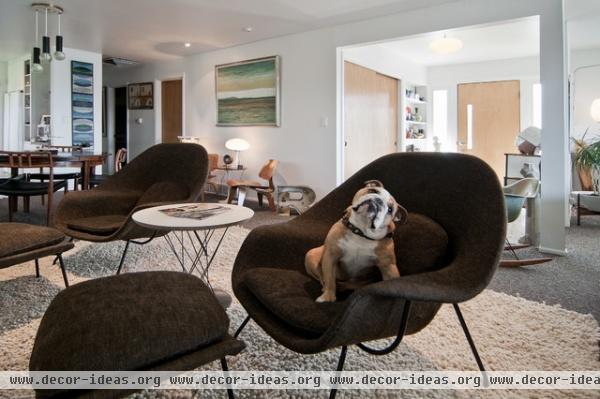
When Hana is not lounging in her favorite spot in the house here, she can be found at Green's store playing with her toy skateboard.
A friend found the Noguchi wire side table at a thrift store and sold it to Green.
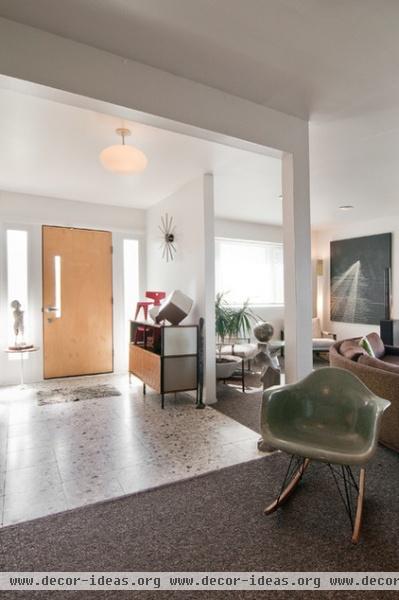
Green replaced the two stained glass windows by the front door with period-looking glass.
Rocker: Charles Eames for Herman Miller, circa 1950, online auction
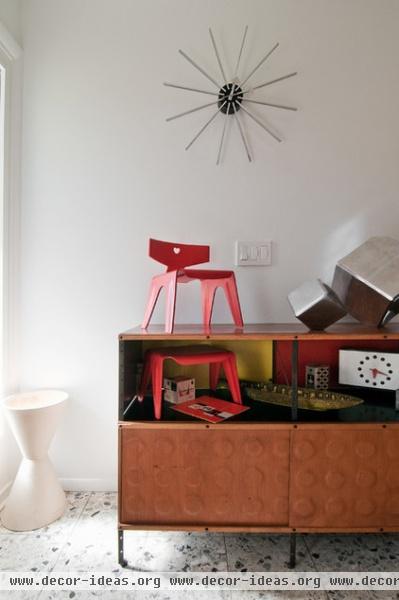
Even the smallest details, like the items on display atop this Eames storage unit in the entry, follow the midcentury aesthetic. Green found almost all of the pieces locally except for this storage unit, which he acquired on a trade with a dealer in Los Angeles.
Storage: ESU by Charles Eames for Herman Miller
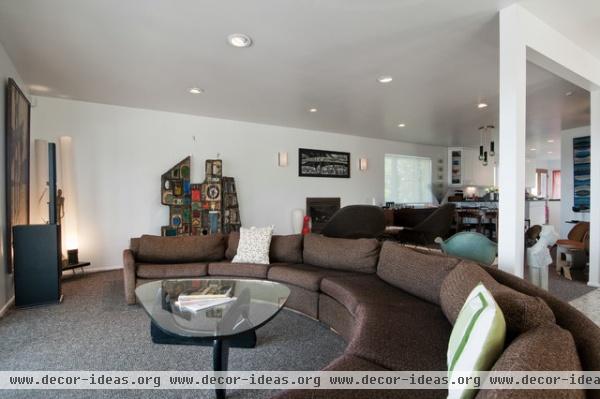
Green's biggest design challenge was deciding which furniture to use and which to store, because all of the furniture was sourced either for or through his shop. "I get to sip the cream off the milk, so to speak," he says.
The 1960s Isamu Noguchi coffee table came from an elderly woman who returned to Salt Lake City after her husband died. "They lived in NYC in the '60s and '70s and had bought some amazing pieces during this period. I got this woman's name and number from a friend of mine, but she wasn't quite ready to sell when I called her."
A year later the woman called Green and he bought the table, along with an original red leather Eames lounge and ottoman, a rosewood Vladimir Kagan wardrobe, a Mies van der Rohe daybed, a pair of Bertoia diamond chairs, a rosewood Warren Platner credenza and lounge chair, and other great midcentury pieces.
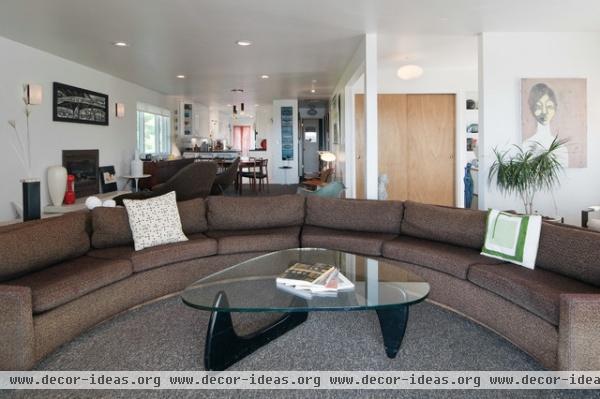
One of the more interesting things about Green's house is how open it is. "I really enjoy that I can see all the way from the back of the kitchen to the deck and the city view beyond," he says. The intentional seating setup breaks up the open room and directs the eye toward the deck and its view.
Sofa: Milo Baughman for Thayer Coggin, circa 1960s, Salvation Army; coffee table: Isamu Noguchi for Herman Miller, circa 1960s
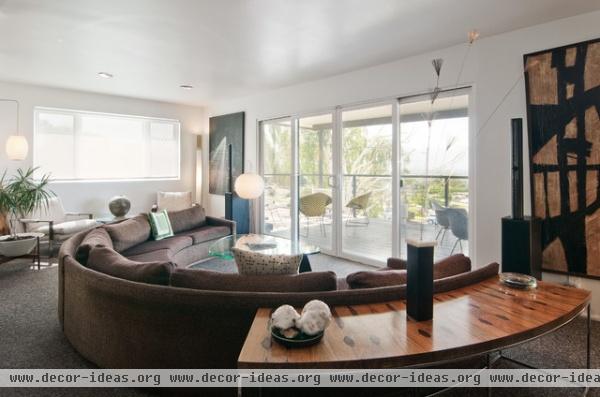
The Milo Baughman sofa and rosewood sofa table were both serendipitous finds at a local Salvation Army. "I saw this sectional stacked in a funny way, so I didn't recognize it at first but thought it was cool," says Green. "The guy working said a sofa table came in with it. When he wheeled it out of the back I could tell immediately from 80 feet away it was a Milo Baughman design. I swung around and saw the base of the sectional and realized it was a Baughman design too." Green snatched it up right away at a deep discount. "I think I smiled ear to ear the entire day," he says.
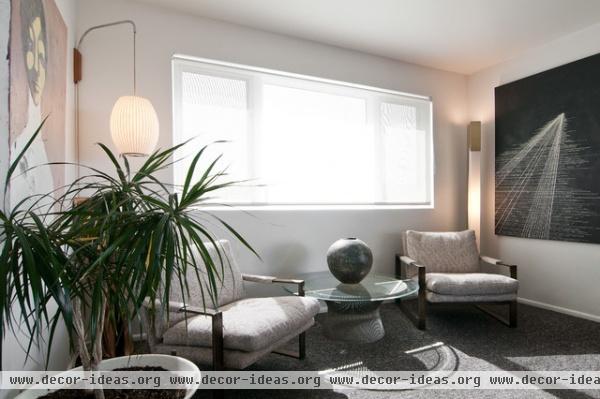
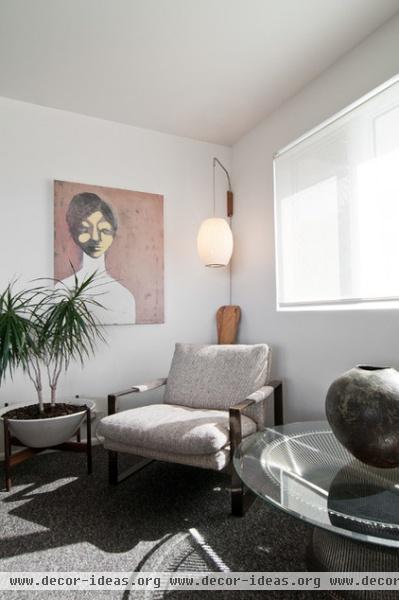
Like a director creating on-screen chemistry, Green had to play around with the interior layout to get the setting just right. One area in particular stumped him, so he asked an interior designer friend for help. "We ended up switching the Platner coffee table and Noguchi side table around," he says. "We put the Warren Platner under the window and the small Noguchi side table between the Womb chairs. A very simple thing now that I look back, but it changed the feel of the room drastically. I finally felt it was balanced."
Table: glass and wire, Warren Platner for Knoll; chairs: bronze, Milo Baughman for Thayer Coggin, circa 1970s
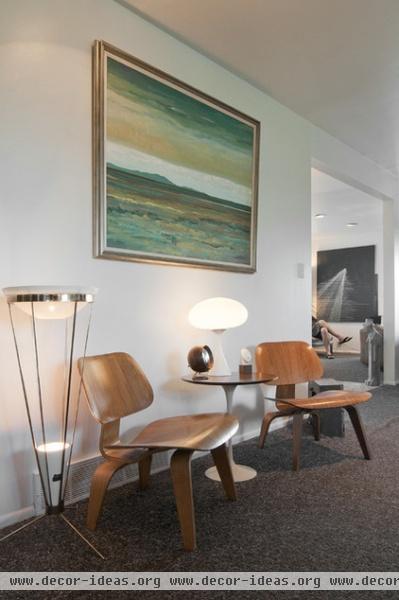
Green created various sitting areas within the open-plan main living space. The Eames molded plywood LCW chair on the left (first year of production) is one of his favorite pieces. He even uses the iconic shape as his shop's logo, and also has it tattooed on his arm.
Chairs: Plywood LCW by Charles Eames for Herman Miller, circa 1940s; table: Tulip by Eero Saarinen for Knoll
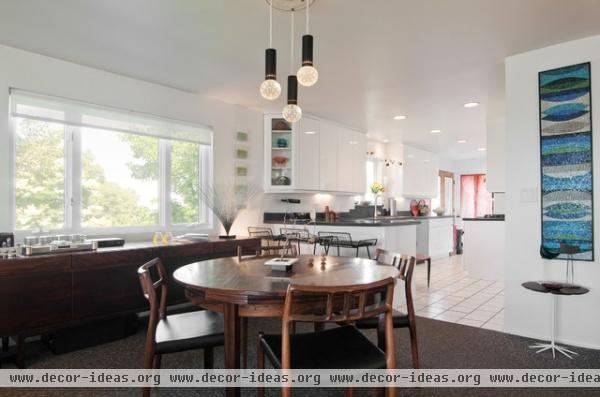
"I looked for about four or five years for a dining table that I loved," Green says. "It was on a house call where an elderly gentleman was getting remarried and downsizing that I saw a rosewood Flip Flap Dyrlund dining table for the first time. And it was with a set of eight rosewood Moller dining chairs. The term 'love at first sight' was an understatement in this case!"
Table: Dyrlund; chairs: Rosewood by Moller; buffet: Rosewood by Ib Kofod-Larsen
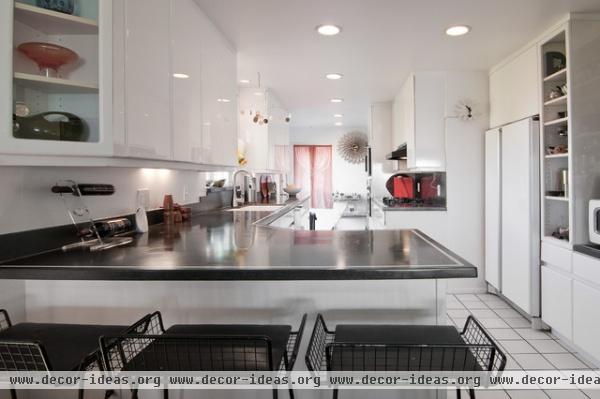
Green left his kitchen, renovated by the previous homeowner, white and simple, as he prefers to add different thoughtful elements to give it life.
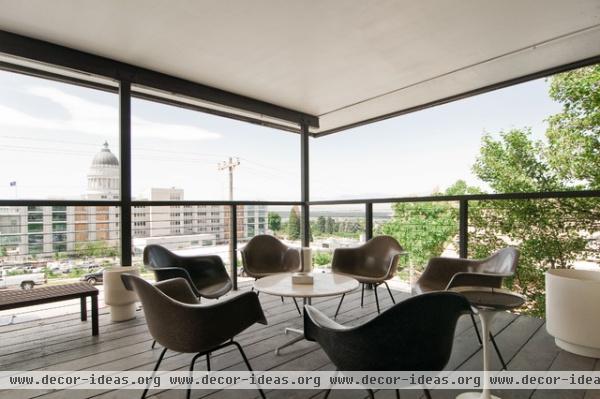
This deck is Green's favorite spot; it's where he enjoys a perfect view of the mountains on one side and the Utah capitol on the other. "I love sitting outside looking out at the mountains while having my morning coffee," he says. Oftentimes Green will spontaneously decide to have a party on his deck and will text as many people as he can a few hours before. Sometimes he gets as few as 12, and other times he gets more than 60.
Side table: Tulip by Eero Saarinen for Knoll; marble-top table: La Fonda by Charles Eames for Herman Miller
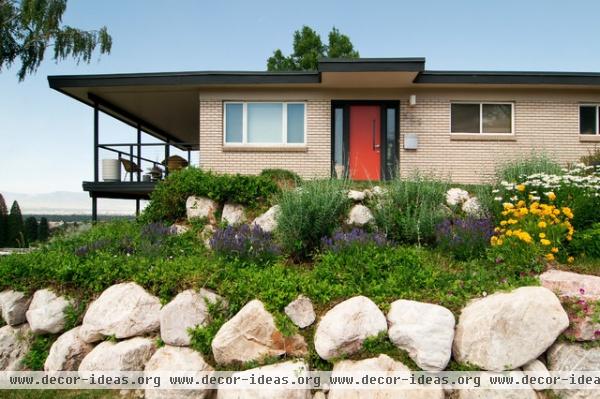
The light exterior paint with dark trim was influenced by Pierre Koenig's 1959 case study Bailey House. "I think my home really felt like mine when I had people over for cocktails and could see my friends enjoying my space," Green says. "I could tell they liked my home as much as I do."












